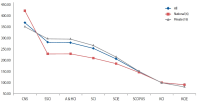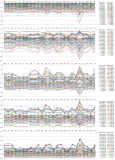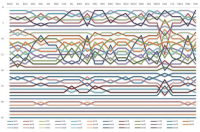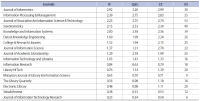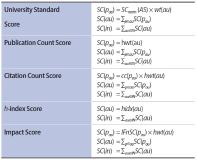JOURNAL OF INFORMATION SCIENCE THEORY AND PRACTICE
- P-ISSN2287-9099
- E-ISSN2287-4577
- SCOPUS, KCI
6권 3호

초록
Abstract
With the increasing demand for intelligent services, knowledge graph technologies have attracted much attention. Various application-specific knowledge bases have been developed in industry and academia. In particular, open knowledge bases play an important role for constructing a new knowledge base by serving as a reference data source. However, identifying the same entities among heterogeneous knowledge sources is not trivial. This study focuses on extracting and determining exact and precise entities, which is essential for merging and fusing various knowledge sources. To achieve this, several algorithms for extracting the same entities are proposed and then their performance is evaluated using real-world knowledge sources.






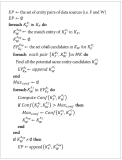

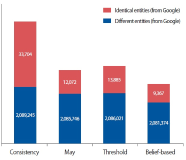

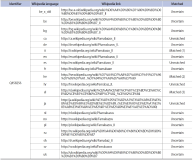



초록
Abstract
The purpose of this paper is to investigate the domain authority, number of webpages, links, and calculate the web impact factor of six public libraries of India which are fully funded by Ministry of Culture with the supervision of administration. The data for the study were collected from websites of concerned libraries with the help of a suitable search engine, Open Site Explorer. The study found that the highest domain and page authority was recorded by Khuda Baksh Oriental Public Library and National Library, respectively. It also further revealed that excepting the two libraries, i.e., Khuda Baksh Oriental Public Library and Delhi Public Library, the internal equity-passing links and total internal links of rest of the libraries is zero. National Library leads with maximum total links and total equity-passing links, also with the highest followed linking root domains, total linking root domains, and linking C blocks, and concludes with the web impact factor of Central Secretariat Library recording the maximum, followed by National Library and Khuda Baksh Oriental Public Library.






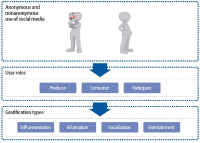
초록
Abstract
Anonymity plays an increasingly important role on social media. This is reflected by more and more applications enabling anonymous interactions. However, do social media users behave different when they are anonymous? In our research, we investigated social media services meant for solely anonymous use (Jodel) and for widely spread non-anonymous sharing of pictures and videos (Instagram). This study examines the impact of anonymity on the behavior of users on Jodel compared to their non-anonymous use of Instagram as well as the differences between the user types: producer, consumer, and participant. Our approach is based on the uses and gratifications theory (U>) by E. Katz, specifically on the sought gratifications (motivations) of self-presentation, information, socialization, and entertainment. Since Jodel is mostly used in Germany, we developed an online survey in German. The questions addressed the three different user types and were subdivided according to the four motivation categories of the U>. In total 664 test persons completed the questionnaire. The results show that anonymity indeed influences users’ usage behavior depending on user types and different U> categories.



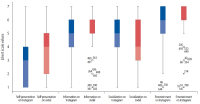
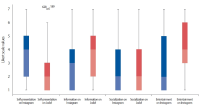

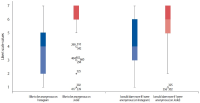



초록
Abstract
An academic article is normally cited within a few years of publication, after which interest falls off as the research field moves on. However, an article is sometimes ignored for many years only to attract interest after a long period of dormancy. Such articles are called “Sleeping Beauties.” A general characterization of this pattern has recently been defined and is used in this study to identify five Sleeping Beauties that were published by researchers at the University of Waterloo in the 1970s and 1980s. While a handful of studies have examined the occurrence of such Sleeping Beauties in specific fields of research or in a particular journal, none has yet identified these unusual articles in the context of the lasting impact of a university’s research. This study is therefore a novel application of the latest technique for identifying Sleeping Beauties. The possibilities for using this unusual citation pattern in raising the profile of a university’s research are discussed.

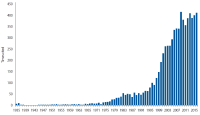





초록
Abstract
Research performance evaluation in Korean universities follows strict guidelines that specify scoring systems for publication venue categories and formulas for co-authorship credit allocation. To find out how the standards differ across universities and how they differ from bibliometric research evaluation measures, this study analyzed 25 standards from major Korean universities and rankings produced by applying standards and bibliometric measures such as publication and citation counts, normalized impact score, and h-index to the publication data of 195 tenure-track professors of library and information science departments in 35 Korean universities. The study also introduced a novel impact score normalization method to refine the methodology from prior studies. The results showed the university standards to be mostly similar to one another but quite different from citation-driven measures, which suggests the standards are not quite successful in quantifying the quality of research as originally intended.




